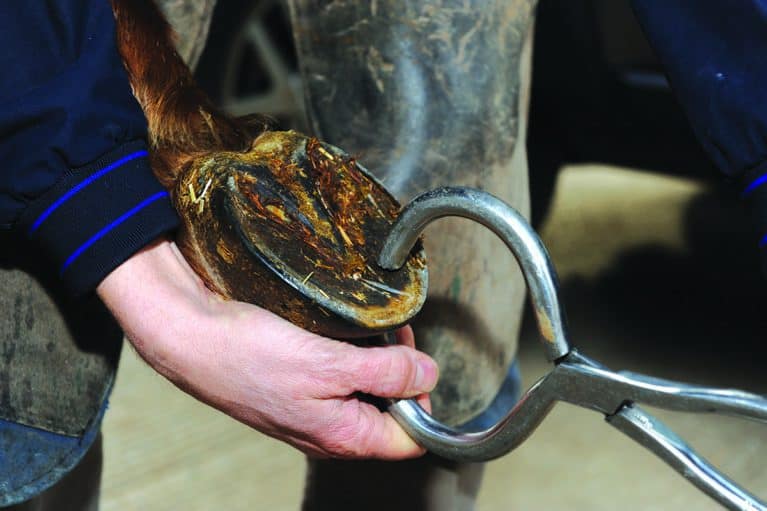Considering going barefoot, but mystified by conflicting advice? Read on for our comprehensive guide to embracing the shoeless lifestyle

Without four sound, healthy feet to stand on, your horse can’t carry out the work you want him to do. Advances in horse care mean there are more options than ever before when it comes to shoeing – from traditional steel and lightweight aluminium to glue-on plastic and composite varieties. But is there a benefit to keeping it simple and doing away with shoes entirely?
The benefits of going barefoot vary from horse to horse, but can include improved circulation to his feet, enhanced traction, a better way of going and stronger, healthier hoof growth. If you’ve been considering the barefoot route, there are several things to think about.
Making it count
While a barefoot trim is cheaper than a set of shoes, there are associated costs that are likely to crop up as your horse transitions, such as buying hoof boots to help while his feet are still sensitive. Some barefoot horses need trimming more regularly than a shod horse would and, as such, finances shouldn’t be your primary motivator when making the decision to remove your horse’s shoes. It’s important to base your decision on what will make him happy and comfortable in his work. Speak to your farrier, who knows your horse’s hooves and growing patterns, for advice on what your horse will need to help him succeed. Your vet will also be able to help you make an informed decision.
All change
Adjusting from shod to barefoot isn’t as simple as removing your horse’s shoes and hoping for the best. To avoid foot soreness, plan his transition carefully. His hooves are likely to be slightly more tender in the early stages and you should allow for anywhere up to three months for them to get to the point where your farrier can begin to reshape them, rather than just trimming them. The full transition process can take up to a year.
During the transition, your horse’s hoof wall should start to strengthen and his sole start to thicken in order to cope with direct contact with the ground. Your farrier will test the thickness of his sole with hoof testers – if it’s very thin, keep him on a soft surface, but spend time gently working on firmer terrain each day to encourage thickening without making him sore. A naturally thicker sole can cope with more varied surfaces and more exposure to firm going earlier on.
Consider his workload when transitioning – you’re likely to find that he gets sore if you continue to ride him as you did before removing his shoes. Treat his transition period like a fitness regime – you have to find a comfortable level for him to work at, then slowly build it up.
An easy start
If your horse is used to being unshod – for example, if he’s a youngster you’re going to begin backing or if he’s had a length of time off work without shoes – his transition period will be slightly different, as his soles and hoof walls will already be used to coping with the barefoot lifestyle and, as such, won’t need as careful a transition process. However, as your horse starts or restarts his working life, his hooves will have to bear more weight, cover a wider variety of surfaces and compensate in a different way than he is used to, so keep an eye on their condition and maintain a regular trimming schedule with your farrier. If your horse starts to show any signs of problems or weakness in his hooves, you can rethink whether he needs to be shod.
All in the angles
When trimming your barefoot horse, your farrier will keep in mind several factors, including breakover, flare and hoof shape. Most barefoot horses are trimmed with a bevelled edge along their toe, encouraging the hoof to land heel first and making the rear two-thirds of the foot the primary weight-bearing area. This reduces concussion and adjusts the breakover, changing the point at which the hoof leave the floor during movement.
Hoof flare is a sign of abnormal growth and wear, and can range from obvious to very subtle. Your farrier will take hoof flare into account when trimming your horse, and may add a roll or bevel to decrease the degree of flare over time.
Your horse’s hooves will change shape and expand as he adapts to being barefoot, so your farrier will, in turn, adapt the way he trims them to encourage correct, healthy growth, particularly if your horse started out with insufficient growth in a particular area, such as low heels.
To find out more about helping your horse transition to going barefoot, pick up the June issue of Horse&Rider, on sale 4 May.















